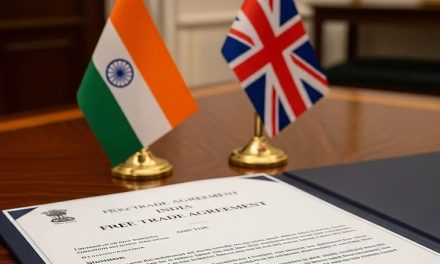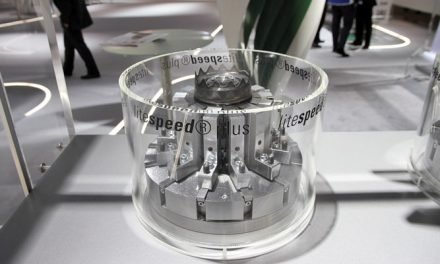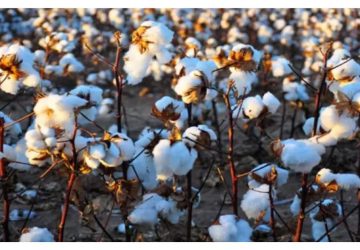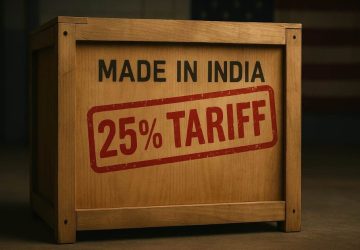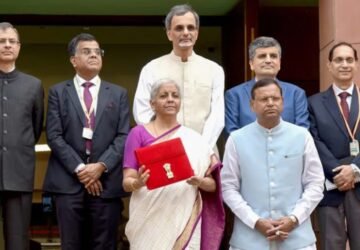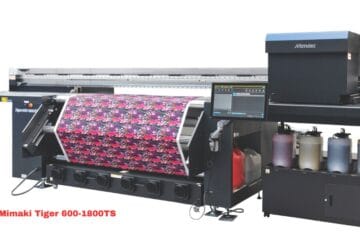
Shoppers eyeing premium apparel may soon have to pay more. Under the revamped Goods and Services Tax (GST 2.0), the rate on branded clothes and accessories priced above Rs 2,500 per piece has been raised from 12% to 18%, a move that could impact global fashion brands such as Marks & Spencer, Levi’s, Zara and H&M.
The hike, aimed at streamlining revenue collections, is expected to push up the prices of high-end garments, making premium shopping a little heavier on consumer wallets. Industry experts warn that this could dampen demand in the mid-to-premium segment, particularly among aspirational buyers.
At the same time, the government has sought to balance the burden by correcting the long-pending inverted duty structure in the textile sector. The GST on manmade fibres has been slashed from 18% to 5%, and manmade yarn from 12% to 5%. This realignment is expected to boost domestic textile manufacturers, reduce input costs, and make India’s synthetic textile industry more competitive globally.
Other reliefs under GST 2.0 include reducing the tax on technical textile products such as industrial fabrics, machine-use textiles, GST 2.0 – A progressive step by the Government but premium apparel gets costlier and specialised felts from 12% to 5%. Similarly, handmade and hand-embroidered shawls, a key cottage industry product, will also attract a lower GST of 5%, down from 12%.
While luxury and branded apparel shoppers may feel the pinch, the structural changes are expected to provide long-term benefits for India’s textile ecosystem. Manufacturers anticipate that lower input costs will eventually improve efficiency and help the sector expand, though short-term consumer prices in the premium fashion market are set to rise. Industry reaction to latest changes in GST ratesar Industry reaction to latest changes in GST rates are covered below.

Sudhir Sekhri, Chairman, AEPC
AEPC welcomes the Government’s latest #GST reforms. The GST reforms announced by the Government marks a big step in making India a developed economy. These measures are progressive and forward looking as they will ease compliance, improve liquidity for exporters, and strengthen India’s textile & apparel value chain. Apparel industry hails it as a decisive step towards boosting #MakeInIndia & enhancing export competitiveness. AEPC thanks the visionary leadership of Hon’ble Prime Minister, Shri Narendra Modi, for supporting the apparel and textile industry with simplified, industry-friendly measures.

Rakesh Mehra, Chairman, CITI
CITI has welcomed the GST Council’s move to rectify the inverted duty structure in the manmade fibre (MMF) value chain. Reacting to the decision, he said the alignment of GST on MMF fibre and yarn to 5 per cent, down from 18 per cent and 12 per cent earlier, will ease liquidity pressures and enhance competitiveness for thousands of spinners and weavers. He also addresses the longstanding blockage of working capital for thousands of spinners and weavers. With over 70-80 per cent of textile and apparel units in India being MSMEs, this reform will directly benefit a large segment of the industry by easing liquidity pressures, enhancing competitiveness,” He said.

Dr. S.K. Sundararaman Chairman, SIMA
The growth of Indian textile industry, the 2nd largest employment provider of the nation that provides job to over 110 million people particularly the rural masses and the women folks of the nation has been stagnated, due to expensive MMF clothing cost as a result of higher rates of tax on MMF fibres, filaments and yarns. When the Government introduced the “One Nation, One Tax” reform through GST by subsuming multiple tax structures, thereby plugging loopholes for evasion, the raw materials of MMF clothing, widely used by the common masses, were taxed at 18% and 12%, while fabrics and garments were placed under the 5% GST slab. This tax structure suffered severe duty inversion, ultimately making the poor man’s clothing more expensive. This also encouraged dumping of cheaper MMF fabrics, textiles and clothing products in the country, greatly impacting the growth of MMF textile value chain.
Globally, MMF textile and clothing fibre consumption accounts 70% while the same accounts only 30% in India, mainly due to the tax structure. The blockage of huge working capital due to duty inversion has also been greatly affecting the profitability and the growth of the Indian textile industry. The Government has introduced unique policy initiatives such as National Technical Textiles Mission (NTTM) allocating Rs. 1,480 crores, Production Linked Incentive (PLI) Scheme allocating Rs.10,683 crores and PM Mega Integrated Textile Regions and Apparel (PM MITRA) Parks scheme allocating Rs. 4,445 crores, giving a major thrust for attracting large sale investment in the MMF textile value chain. These schemes could not yield the envisaged results mainly due to higher rates of GST on MMF and yarns.
SIMA has highly appreciated and thanked the Hon’ble Prime Minister Shri Narendra Modiji, Hon’ble Union Minister of Finance Smt. Nirmala Sitharaman, Hon’ble Union Minister of Commerce & Industry Shri Piyush Goyal and Hon’ble Union Minister of Textiles Shri Giriraj Singh for the bold and historical tax reform brought for the MMF textile value chain by slotting the entire value chain in the 5% slab, a long pending demand of the textile industry and greatly addressing the MMF raw material structural issues.
He has said that the government has set a vision of increasing the textile business size from USD 172 billion to USD 350 billion and the exports from USD 37 billion to USD 100 billion. He further added that textile exports got stagnated at USD 37 billion by more than 12 years. He has stated that the depleting cotton production has also curtailed the growth of the textile industry. He pointed out that the country would need around 22 billion kgs of raw material (fibres and filament yarns) as against the current availability of around 12 billion kgs, to achieve the vision and particularly polyester will be the main growth engine for the textile industry to achieve the vision.
SIMA Chairman has stated that though PTA & MEG and wood pulp, the raw materials for manufacture of polyester and viscose respectively, continue to attract 18%, the revised change in the law to provide 90% provisional refund in 7 days, which was not prevalent in the case of inverted duty refund, is the solution for addressing the duty inversion for the MMF producers. He has added that as the number of MMF manufacturers are very limited, the government can easily resolve their tax related problems and thus fully address the issues of several lakhs of manufacturers, traders and ultimately the consumers.
SIMA Chairman has also highly appreciated the government for establishing fibre neutrality, totally arresting the loopholes for duty evasion, ensuring 100% compliance by bringing the entire textile industry under the 5% slot, fully taking care of the compounding taxpayers who pay 1% tax rate. Dr. S.K. Sundararaman has stated that the bold and timely initiative of the Hon’ble Prime Minister is a very big boost for mitigating the abnormal tariff imposed by the US on the Indian goods.
He has said that the domestic consumption can very well be increased by 7-10% in a short span of time, increasing the per capita consumption and bringing more revenue to government, as the final products attract 5% GST and thus enable the industry to navigate the challenges posed by the US tariff.

Santosh Katariya President, CMAI
CMAI, wholeheartedly welcomes the latest changes made in the GST Rates, especially relating to the Textile Industry. The Government has accepted two major requests of the Industry – the removal of the Inverted Duty Structure by making the entire Value Chain from Fibre onwards charged at one rate – 5% – and adopting a fiber-neutral policy, by equating the MMF and Cotton fiber chains. The increase of the 5% limit from Rs.1000 to Rs.2500 is also an extremely positive move. CMAI has only one request to the GST Council. In the entire Value Chain from Fiber to Garment, garments above Rs.2500 are the only products which are not at 5%. We earnestly request the Council to remove this anomaly, and either place all garments, irrespective of the price, at 5%, or fix a more reasonable and realistic price level.
Garments above the price of Rs.2,500 are also consumed in large numbers by the common man and middle class, especially woolen clothing, occasion wear, Indian Traditional clothing, Handlooms, embroidered clothes produced by artisans and traditional weavers are all priced above this limit of Rs.2,500 – all of which will see a significant price increase due to this change of GST Rate. We thus strongly urges the GST Council and Government to review this aspect.

Rajeev Gupta Joint Managing Director RSWM Ltd
We welcome the Government’s forward-looking GST reform, which will have a far-reaching impact on India’s economic growth by improving affordability, reducing working capital requirements, and boosting demand across industries. For the textile sector, this is a particularly transformative step. The reduction of GST on manmade fibre from 18% to 5% and on synthetic yarn from 12% to 5% will significantly strengthen the domestic textile industry, enhance competitiveness, and stimulate consumption. The revision of the apparel slab, raising the limit from Rs. 1,000 to Rs. 2,500, will provide a powerful boost to garments and apparel demand, thereby creating new opportunities across the textile value chain. At the same time, we believe that harmonizing GST on recycled polyester fiber and its raw material, PET bottles (18%),
is an important area that needs attention to unlock the full potential of circular textiles. We remain committed to driving sustainable innovation, scaling domestic production, and contributing to India’s journey towards Viksit Bharat @2047.

Sanjay Kumar Jain Managing Director, T.T. Limited
The decision will ensure higher disposable income for consumers, more demand for garments, and improved cash flow for companies. It was a longstanding demand of the industry to remove the inverted duty structure in MMF yarn and fabric. Now, the entire chain is at 5 per cent, the same as cotton. With the new structure, garments above Rs. 2,500 will get 6 per cent more expensive. All formal wear and wedding dresses are priced above Rs. 2,500 and even a common man spends for dresses during weddings. This is not just limited to occasional purchases but is an essential part of Indian culture and tradition where families spend on such garments. Anything that gets expensive will affect sales and also put pressure on both consumers and retailers. This will further slow down demand in the organised sector and hurt the growth of small and medium apparel manufacturers. Hence, we request the government to have a relook at the 18% duty for garments priced above Rs. 2,500, so that affordability and industry growth can go hand in hand. A supportive tax policy will not only benefit consumers but also strengthen the entire textile and garment ecosystem in the country.


